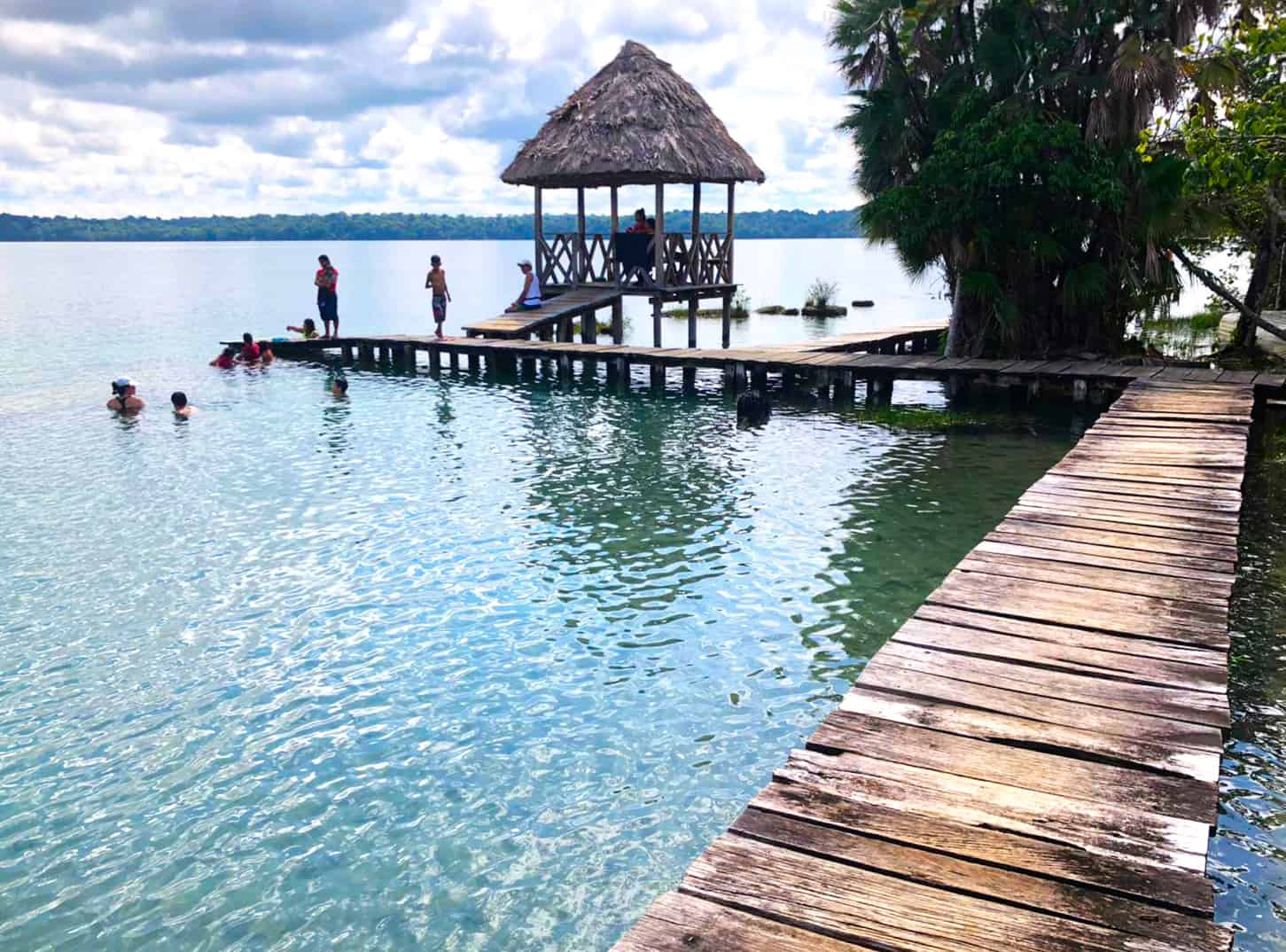Laguna Lachuá – Guatemala’s Hidden Gem
If you love trips off-the-beaten-track, have a hankering for a jungle adventure, and want to relax beside a pristine lagoon while listening to howler monkeys roaring in the trees, Laguna Lachuá might be the perfect place for you!
Why Visit Laguna Lachuá?
As one visitor to Laguna Lachuá said, It “was truly spectacular, very wild” and I can’t help but agree!
There’s nothing quite like hiking through humid heat, surrounded by jungle plants and birdsong, with monkeys clambering in the trees above you… and then discovering a gorgeous little lagoon at the end of your trek.
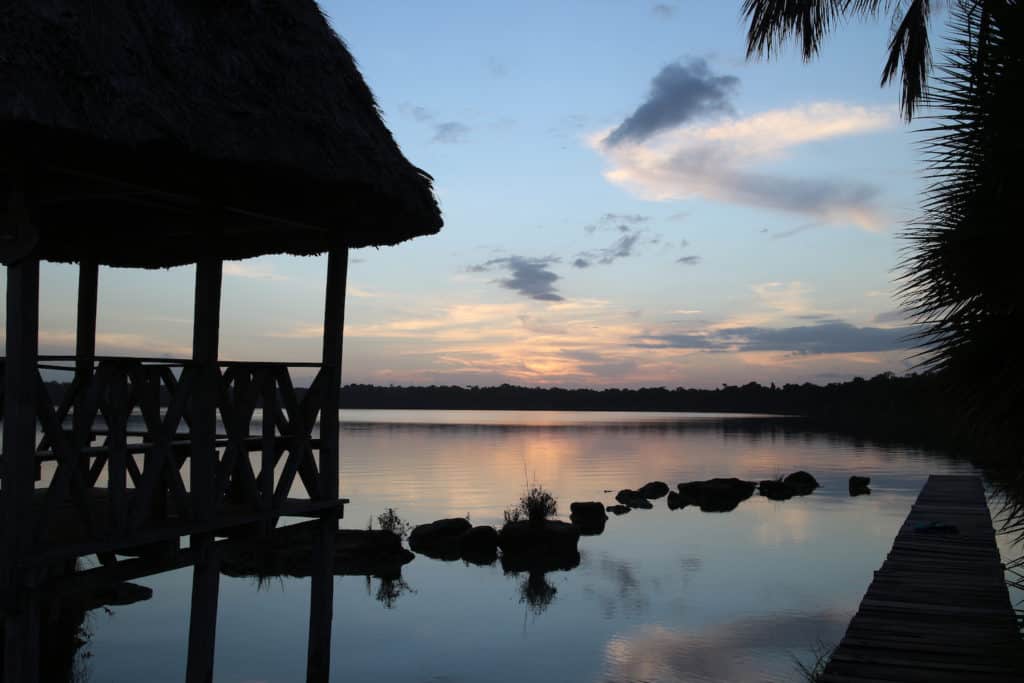
This circular lake is unspoiled and tranquil. It’s a fabulous place to visit for a day (or a few), relax, swim, and put the local fish to work exfoliating the soles of your feet!
Most visitors to Lachuá visit on weekends, so if you go during the week as I did, you’ll probably have the place to yourself.
Where is Laguna Lachuá located?
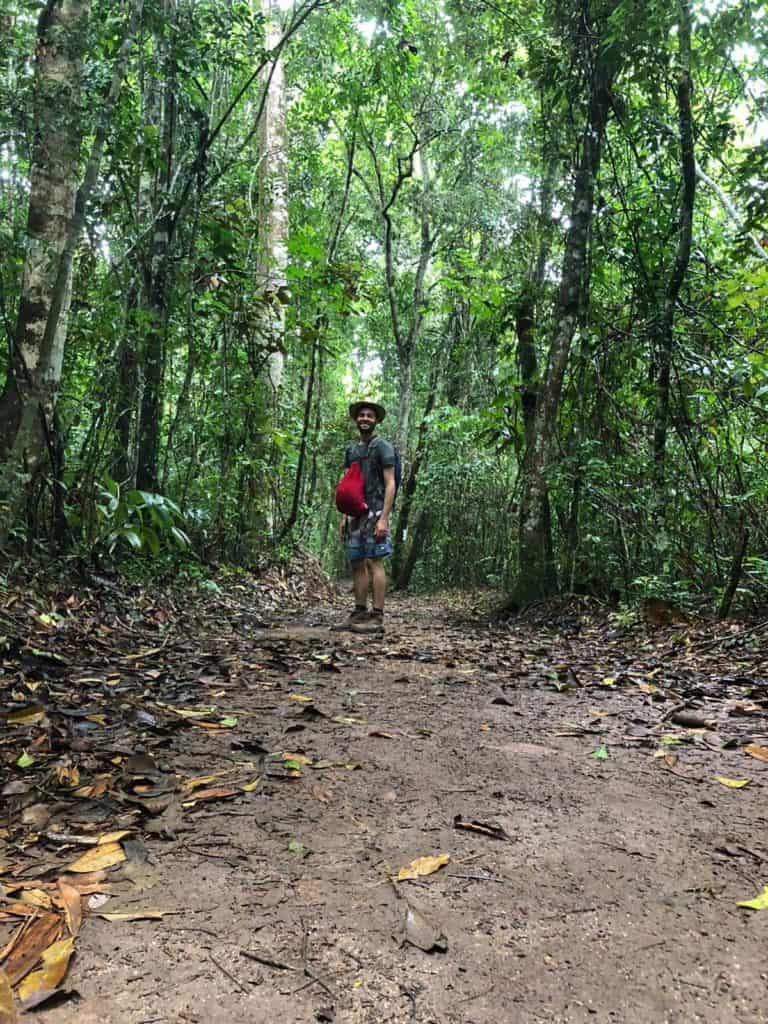
Laguna Lachuá lies at the center of a 90-square-mile national park located in the department of Alta Verapaz, Guatemala.
It’s about an eight-hour drive from Guatemala City and a three-hour drive from the city of Cobán. The last section of the road is unpaved dirt and rocks, so that part takes a bit longer.
Once you reach the park entrance, you’ll need to hike an additional two and a half miles in order to reach the lakeshore recreational area.
Later in this post, I give more detailed instructions on how to get to Laguna Lachuá.
What is Laguna Lachuá National Park known for?
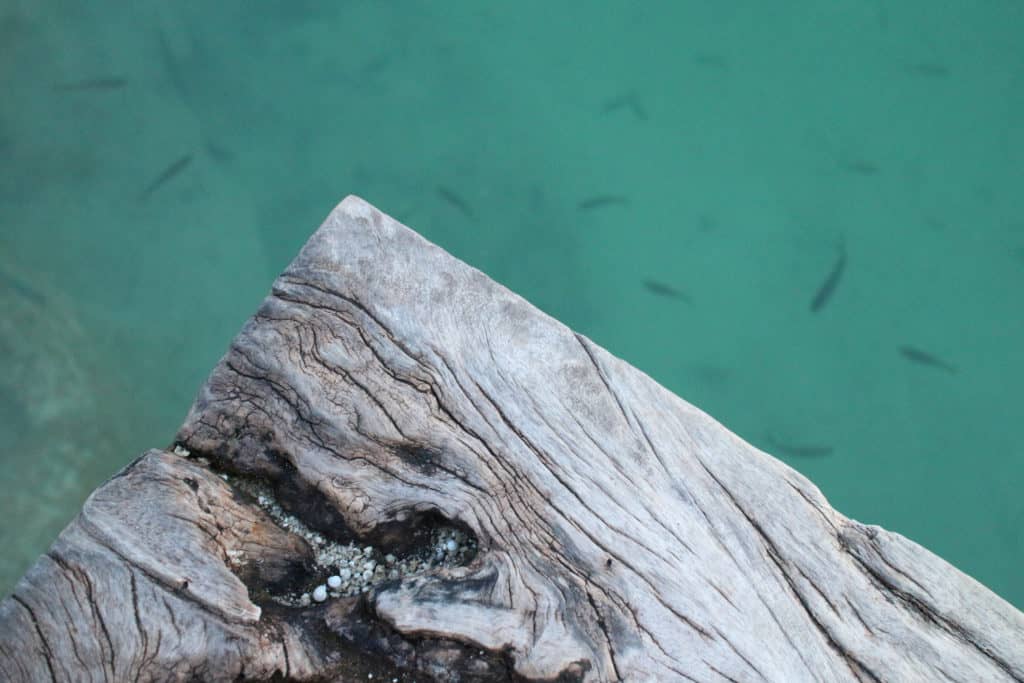
Laguna Lachuá National Park is known for its beauty and biodiversity. Fifty percent of Guatemala’s mammals and forty percent of Guatemala’s birds can be found here, not to mention a plethora of reptile and fish species. (1)
As a case in point, during my trip to Lachuá in 2018, I got to see spotted pacas, Guatemalan black howler monkeys, tarantulas, and cichlid fish, plus a vibrant array of jungle plants. (Read on to hear about my encounter with a particularly territorial fish.)
This karstic lake is most likely a cenote or sinkhole formed in the limestone bedrock of the region (much like Laguna Brava and the Cenotes de Candelaria, twoother attractions I’ve written about).
According to Show Caves, Laguna Lachuá is 565 feet above sea level, but 728 feet deep, so it actually extends 160 feet below sea level. Pretty cool, right?
Things to do at Laguna Lachuá
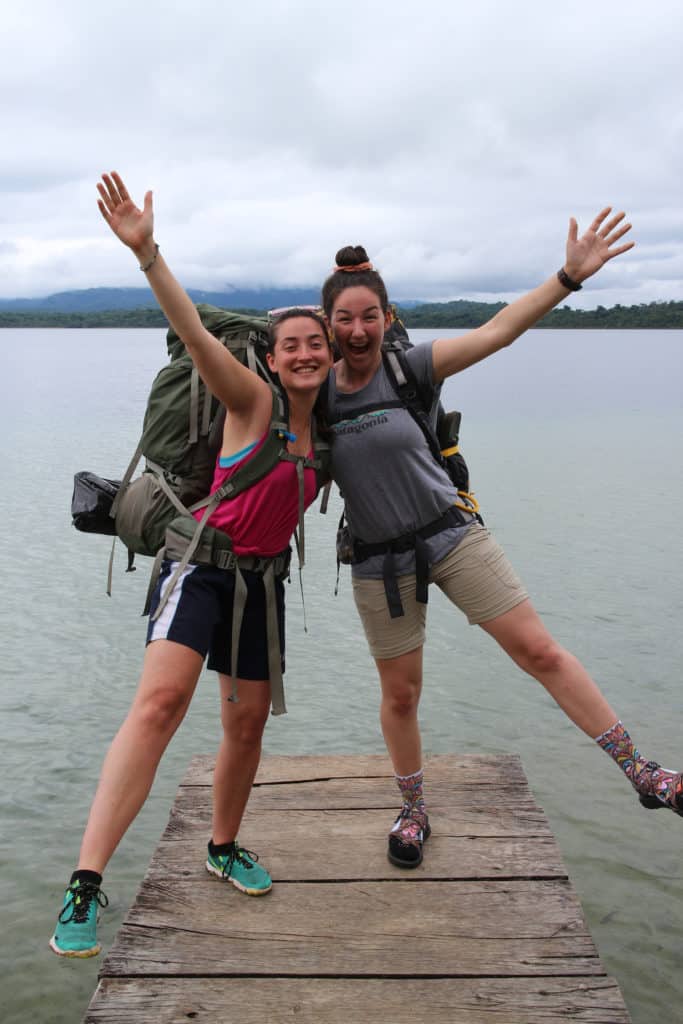
Hike
Since you HAVE to hike to get to Laguna Lachuá, this kind of goes without saying, but it adds an additional activity to the mix and can be lots of fun–albeit very hot and humid, and potentially exhausting (if you suffer from the same over-packing syndrome as my family).
Picnic/Barbecue
I highly recommend packing a picnic lunch, or even going all out and having a barbecue. (There are barbecue pits on site)
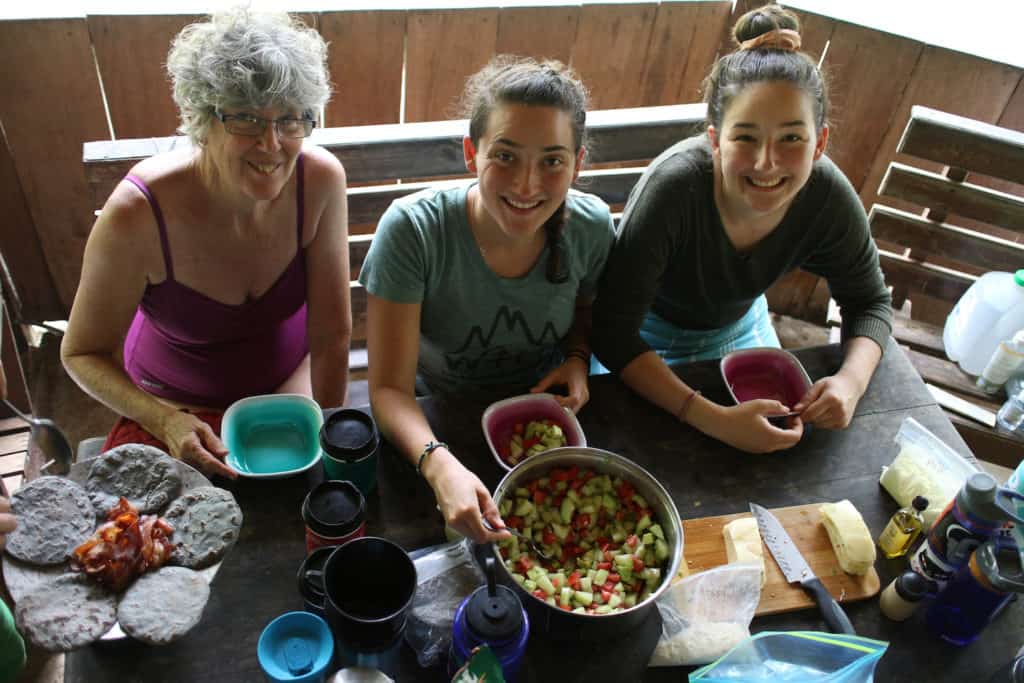
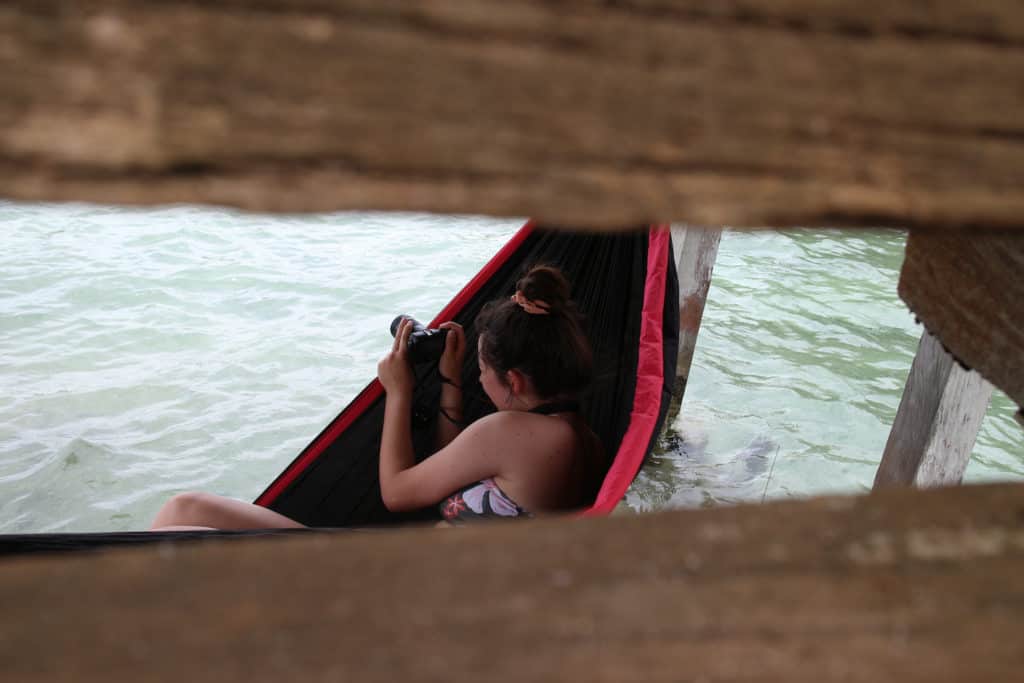
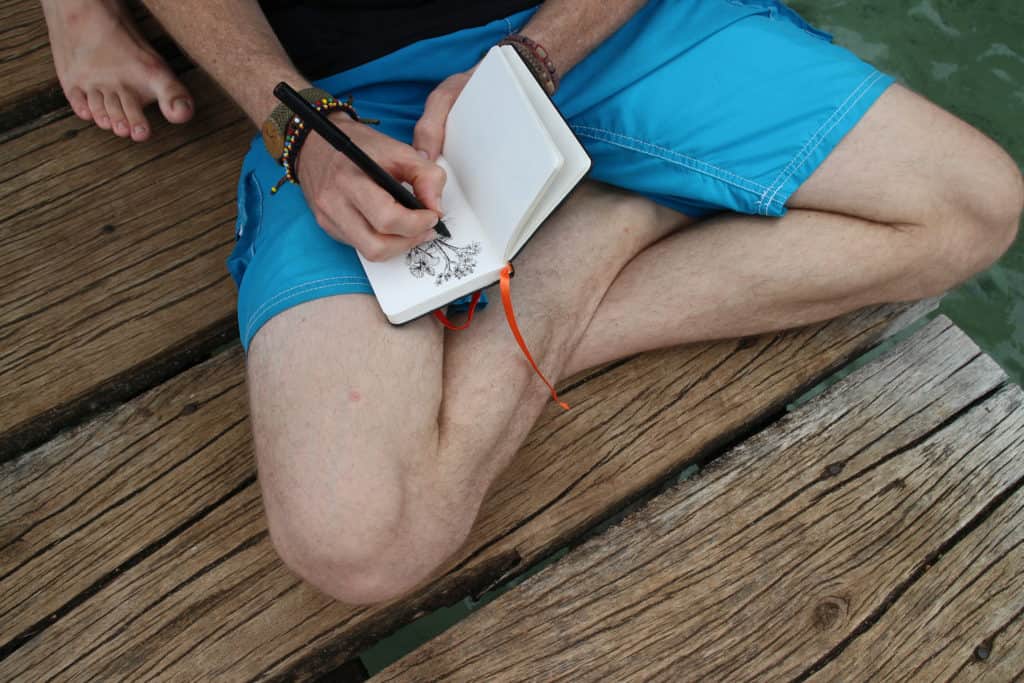
Relax
Laguna Lachuá’s tranquility makes it a perfect place to relax, whether that means dozing in a hammock, meditating from a bench in the gazebo, doing yoga at dawn on the dock, or dangling your feet in the water while you soak in the scenery.
During my stay at this lagoon with my family, various of us enjoyed drawing, journaling, playing card games, and reading.
Explore Nature
I loved taking a close-up look at the riot of jungle plants, trees, and mushrooms during our hike into Laguna Lachuá, as well as during our stay. My artist brother enjoyedadmiring colorful insects and taking pictures of bark, roots, and leaves for his texture library.
It was also fun to glimpse monkeys in the trees, watch agoutis running around the recreation area, and pepper the caretaker for the names of other birds and animals I spotted.
If birdwatching is your thing, this could be a great place for you!
Swim & Snorkel
My favorite moment from my trip was swimming during a torrential downpour. My family and I raced down to the dock with the storm roaring down on our heels.
We jumped into the water just as the air turned liquid with raindrops. I dove under and could hear the rain humming into the water above me, then surfaced to a fierce refreshing shower.
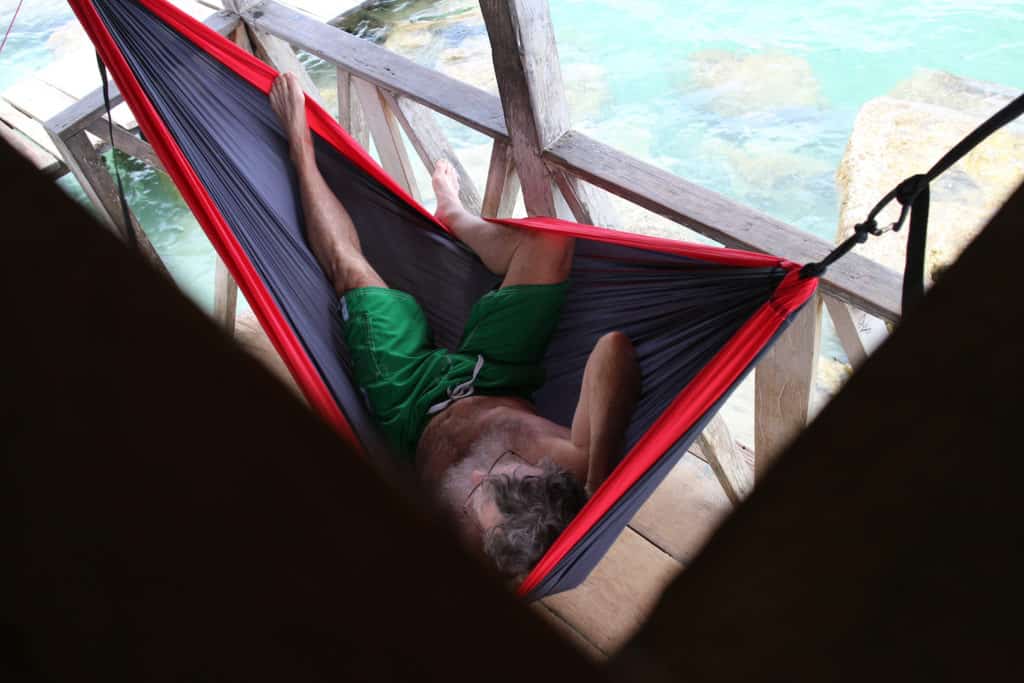
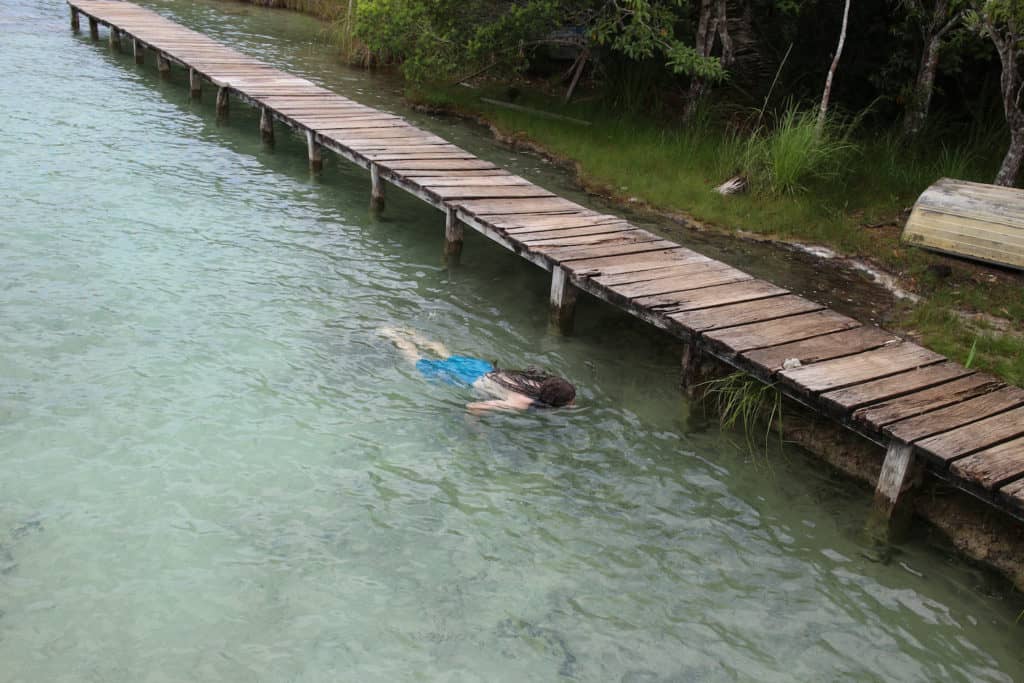
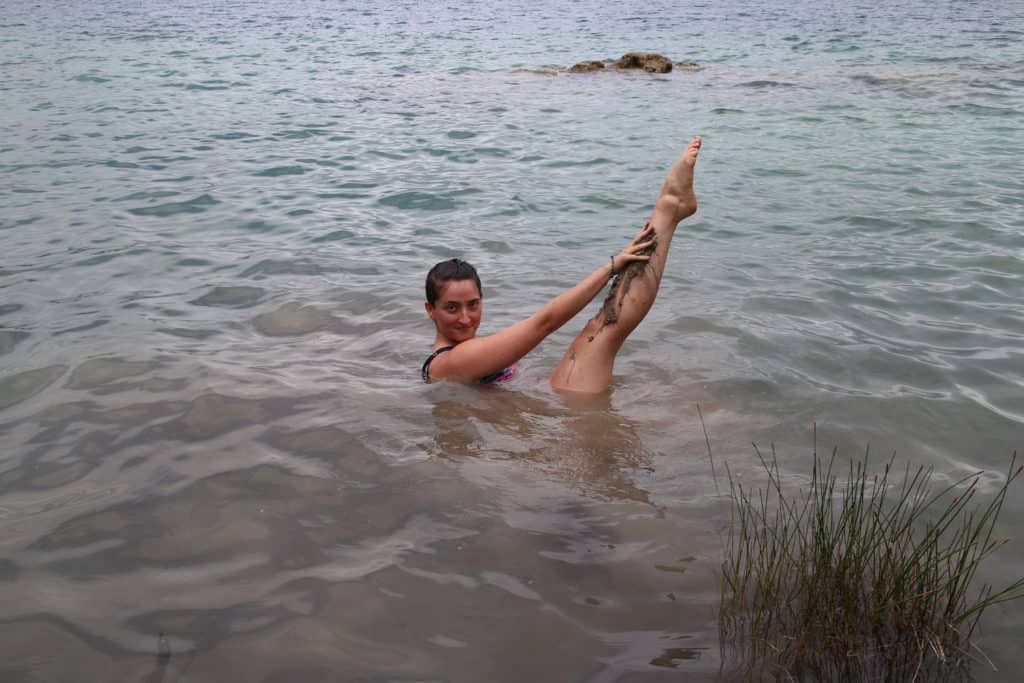
But don’t worry, you don’t need to swim in the rain to have an amazing time. The lagoon is gorgeous on sunny days too, with fish nibbling at your toes in the clear water.
You can even apply mud to your legs for a sulfur-smelling mask, or snorkel among the limestone boulders for a closer look at cichlid fish.
My brother really enjoyed snorkeling and spent a large amount of time floating around on the surface with his dreadlocks trailing behind him. At one point, he called me over to look at a large fish, but I must have gotten too close to it for comfort because it zipped right out of the rocks and bit my big toe.
That was a shock! (And unfortunately, not my only painful encounter with a fish–I also got smacked in the head by one when swimming through a swell in the Pacific Ocean.)
Camp
If you don’t mind hiking in your gear, Laguna Lachuá is a nice spot to camp. It’s jungly and wild (pit latrines, howler monkey roars, tarantulas, etc), all of which makes for a neat camping experience.
My family and I camped at Lachuá during the rainy season. It poured rain every afternoon, which would have been miserable if we’d been out in the open.
Fortunately, the caretaker gave us permission to camp inside the main palapa. It had plenty of room for several tents, our camp kitchen, and card games at the picnic table.
If you don’t have gear but still want to stay near the lake, you may be able to reserve a room in the hostel-style bungalows on site. (Check ahead to see if they are open, or be prepared to hike out and stay elsewhere).
Check below for what I recommend taking with you.
Best time of the year to visit Laguna Lachuá
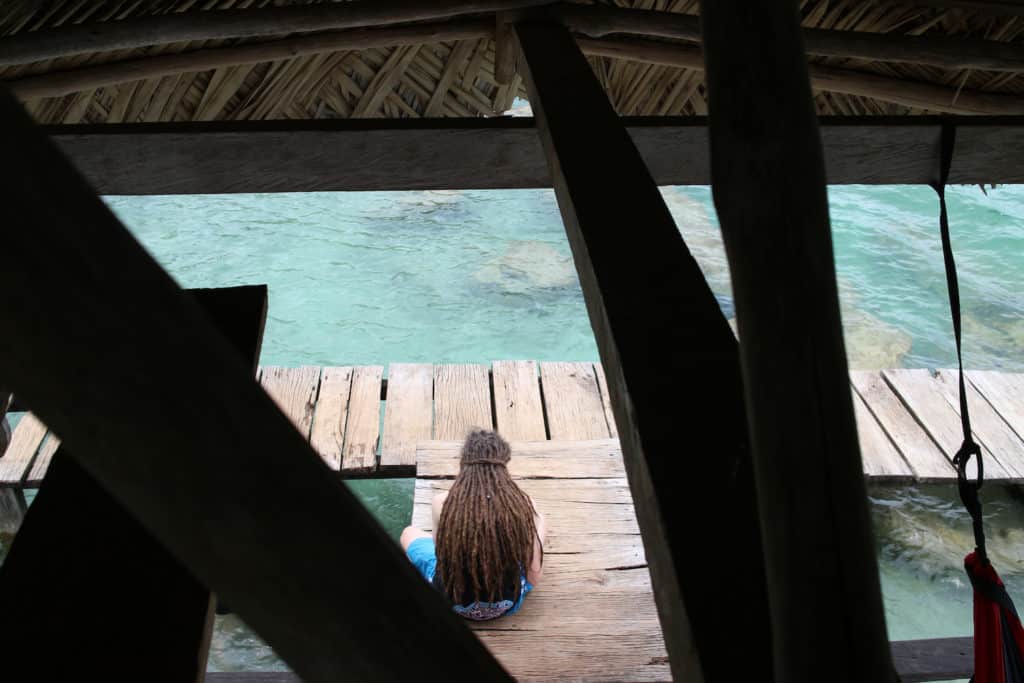
Laguna Lachuá National Park is open all year round, but if you visit between May and October, be prepared for heavy rains and mud.
If you plan to take your own vehicle to the park, keep in mind that you will have to drive on a dirt road for a while and it can get very muddy and full of pot-holes.
My family and I went during the month of July, and it poured rain every afternoon and sometimes during the night as well. The lake waters may have been a little more cloudy than during the dry season, but it was still gorgeous!
We also had plenty of areas where we could take shelter from the rain when we didn’t feel like getting wet, including the lakeside gazebos and the main palapa.
Days and Hours when you can access Laguna Lachuá
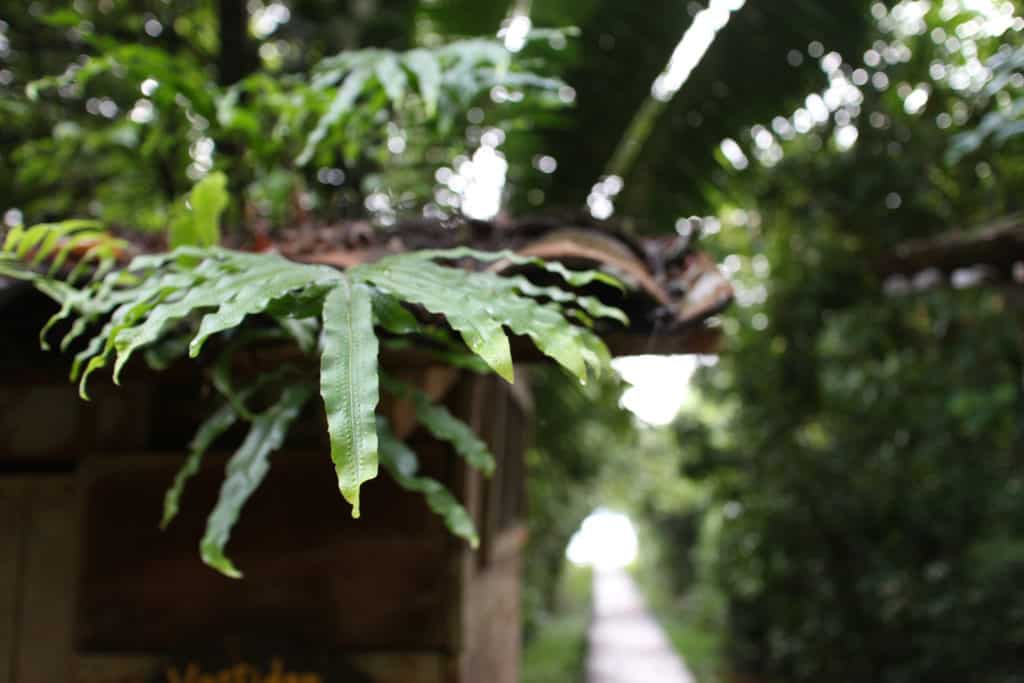
Hours: 8 am to 2:30 pm (to enter the park)
* If you are visiting during the day, you must be back at the Visitor’s Center by 4 p.m.*
** If you are camping, you must enter the park before 4:30 pm**
Days: Tuesday through Saturday
Important Things to Know About Laguna Lachuá
Before you enter Laguna Lachuá National Park, a park ranger will give a short presentation about the area and the regulations you should follow, but I think it’s nice to have a heads-up about what to expect.
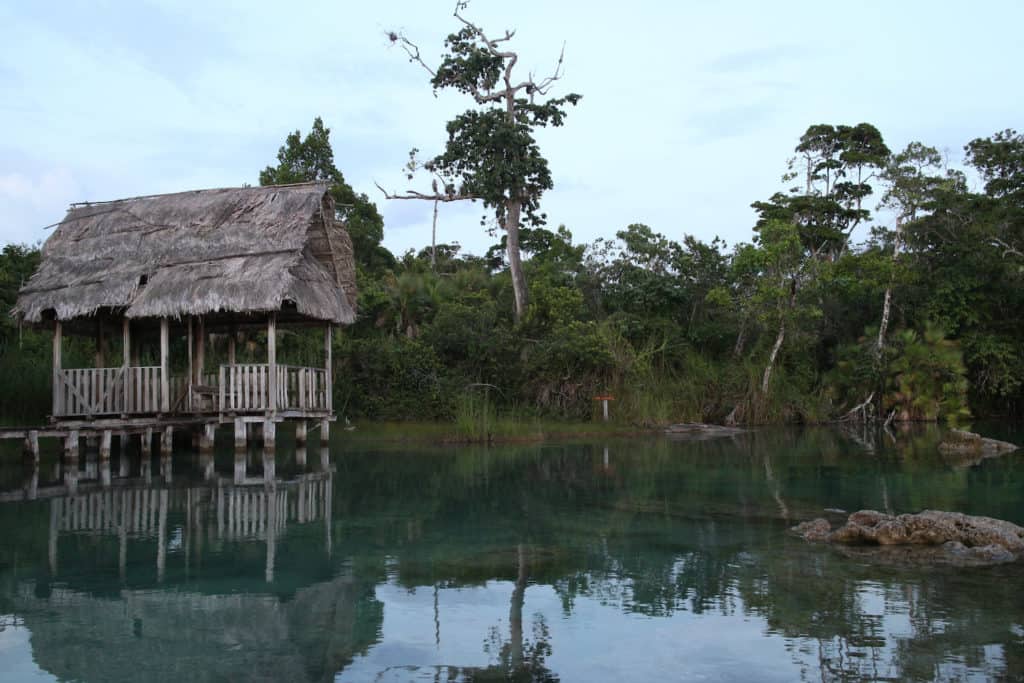
Here are a few important details you should know before going to Laguna Lachuá.
- You are responsible for your trash. Be sure to take all of your trash out with you when you leave
- Swimming is only allowed in the designated swimming area
- Do not feed the wildlife
- No fishing/fish hooks, food, balls, floaties, face masks, plastic water bottles, backpacks, soap or shampoo are allowed in the swimming area
Pro Travel Tip: Don’t travel without insurance! I recommend SafetyWing Nomad Insurance. It’s affordable and super easy to renew if you decide to extend your travels or if you have flexible plans. You can renew on a month to month basis and pay the same exact deductible for up to 1 year.
Contact numbers
Call these numbers for the most up-to-date information on Laguna Lachuá park hours, regulations, etc.
Romeo Palacios +502 5988-0736
Lachuá Administration +502 3013-9721
Since there is no cell service in the park, you might have better luck sending a Whatsapp message to Romeo Palacios than giving him a call. He’s pretty good about answering messages once he’s back in cell range.
However, you can also try calling the Office of Tourist Information for Coban at +502 3128-6907 or the Delegate for Tourist Assistance, Chales Fraatz, at +502 4796-84333.
Costs at Laguna Lachuá
Entrance fees
Nationals: Q25 for adults, Q10 for children under twelve, Free for students
Foreigners: Q50 for adults, Q25 for children under twelve
Camping fees
The camping fee is paid in addition to the entrance fee.
Nationals: Q20 for adults and Q10 for children
Foreigners: Q30 for adults, Q15 for children
Sleeping Overnight in the Cabins*
Nationals: Q50 for adults, Q25 for children
Foreigners: Q70 for adults, Q35 for children
June 2023 Update: My contact at Lachuá said the cabins aren’t currently open, but that they will be soon.
Additional Costs
Renting a tent: Q25 per tent
Commercial Photography, videography, or drone permit: Q550
What to take to Laguna Lachuá
The climate at Laguna Lachuá is hot and humid, so be sure to take appropriate hot-weather clothing and plenty of fluids so you can stay hydrated.
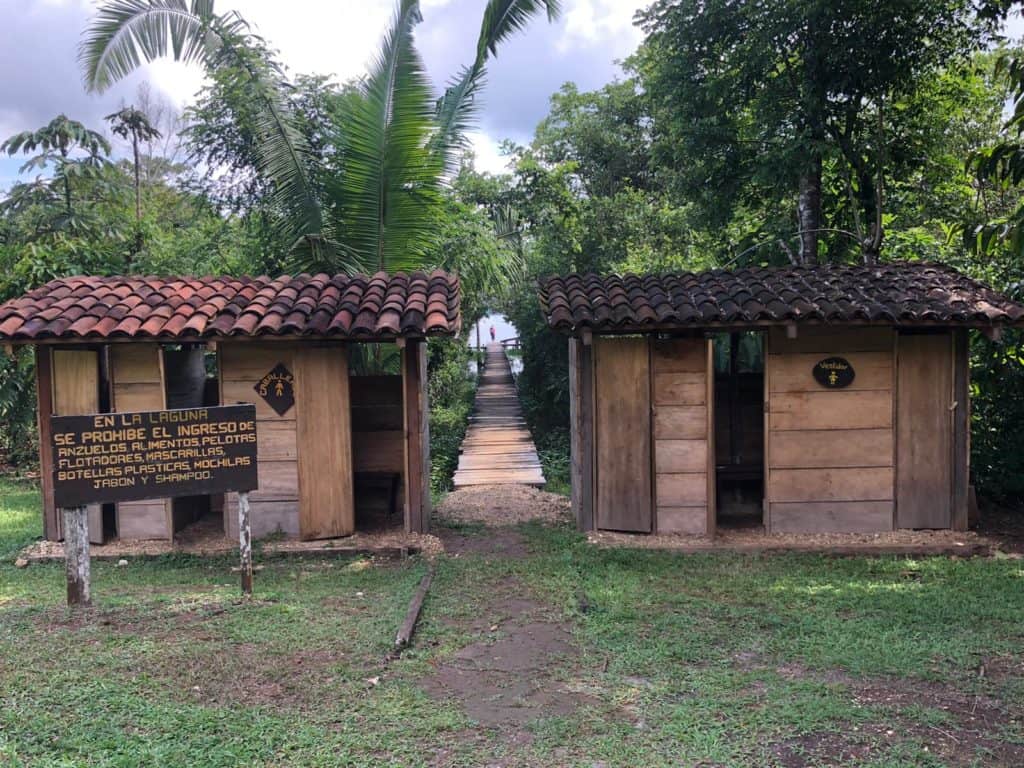
There is a small store at the visitor’s center, but once you enter the park the only food and water available is what you carry with you.
If you want to buy firewood for a barbecue lunch, there are sellers near the visitor’s center.
Day Trip Supplies
- Good footwear for hiking
- Rainjacket (if going between May and October)
- Day Pack
- Water for the day
- Bug spray
- Sunscreen
- Hat/sunglasses
- Bathing Suit & Towel
- Camera
- Food (pack lunch or bbq supplies, and snacks)
- Activities: cards, book, drawing supplies, snorkeling gear, whatever you enjoy!
Camping/Overnight Trip Supplies

In addition to the day trip supplies take:
- Lantern/headlamp
- Change of clothes
- Light sweater
- Toiletries
- Flip-flops or water shoes
- Extra water (or a water filter)
- Food for the duration of your stay
- If camping, take a tent, mat, sleeping bag/light blanket/sheet, camp stove, pot, plate/utensils
Facilities at Laguna Lachuá
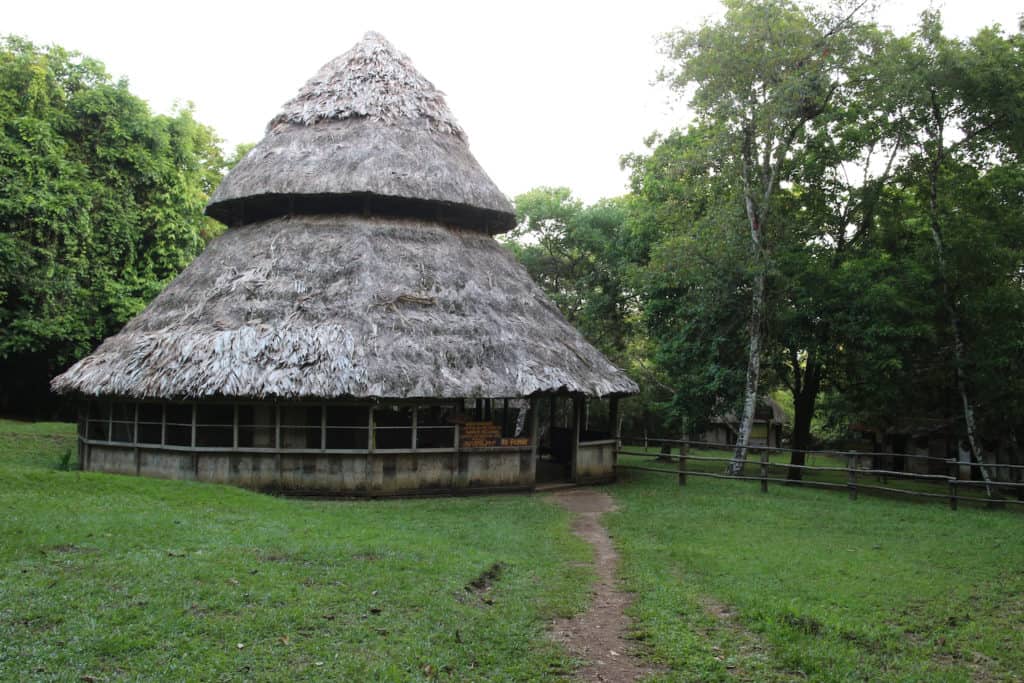
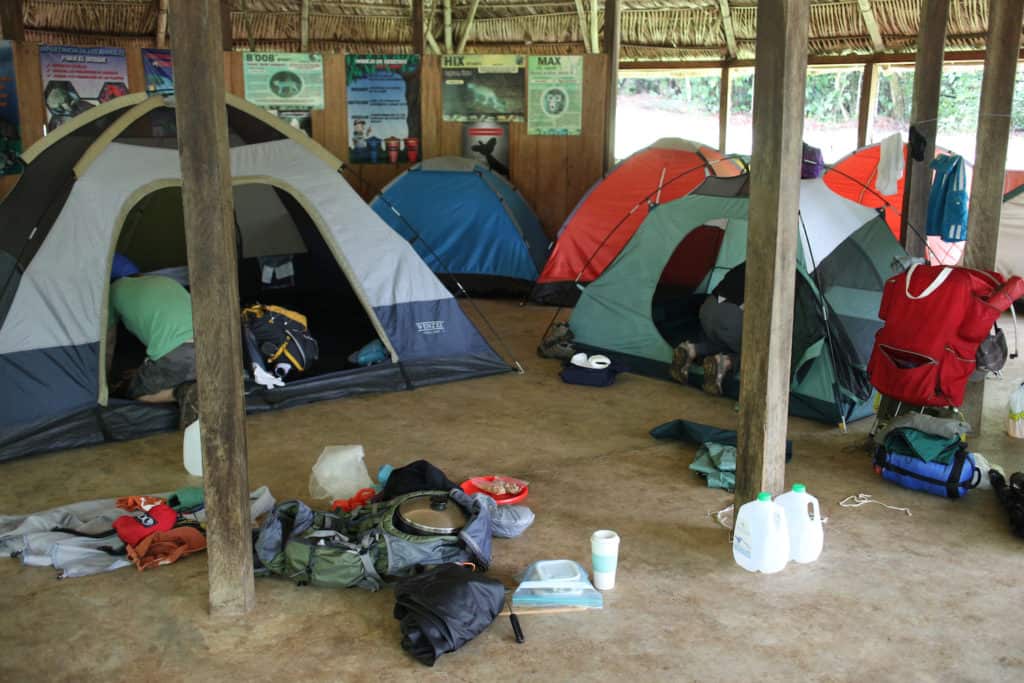
Laguna Lachuá’s recreational area includes the following facilities:
- Changing rooms
- Latrines
- Large palapa
- Small picnic areas with barbecue pits
- Green area for camping
- Over-water gazebo and docks
- Hostel
- Hostel kitchen palapa
Accommodations Near Laguna Lachuá
Camping at Laguna Lachuá and staying in the on-site hostel is my personal favorite option, however, there are also some nearby alternatives.
Keep in mind, I haven’t stayed at any of these places so I can’t vouch for them. Do your own research!
Doña Onelia Bucana +502 5782 9113
This is a small cabin/hostel across from the visitor’s center where 8-10 visitors can stay. It’s probably very rustic, but at least it’s in a handy location.
Rancho Saragoza +502 3097-7854
This ranch is 4 miles (6.5 km) from the visitor’s center and according to one guest has “Spectacular reception and good food and [is] a very beautiful place ??”
Ecocentro La Charca de Don Jerónimo +502 3280-3705
This is a restaurant, hotel, and eco-center (with ostriches and other animals!). The facilities include swimming pools and slides and an astroturf field. It is located 4.3 miles (6.9 km) from the Laguna Lachuá Visitor’s Center.
There are also some hotels in Chisec, located approximately 1.5 hours from Laguna Lachuá, including
- Hotel y Restaurante Casa Vieja +502 4004-1269
- Hotel Estancia de la Virgen +502 5514-0800
- Hotel y Restaurante Bombil Pek +502 4853-3565
How to get to Laguna Lachuá
Getting to Lachuá isn’t difficult, but it is about 218 miles from Guatemala City, so you’ll need to take that into consideration when planning your trip.
How to Get to Laguna Lachuá by Car
If you want to get to Laguna Lachuá in your own vehicle, it is totally doable! Although the last three miles of the road is unpaved, the park ranger at Laguna Lachuá told me that sedan-type cars can make it to the visitor’s center without incident (you may just need to drive slowly).
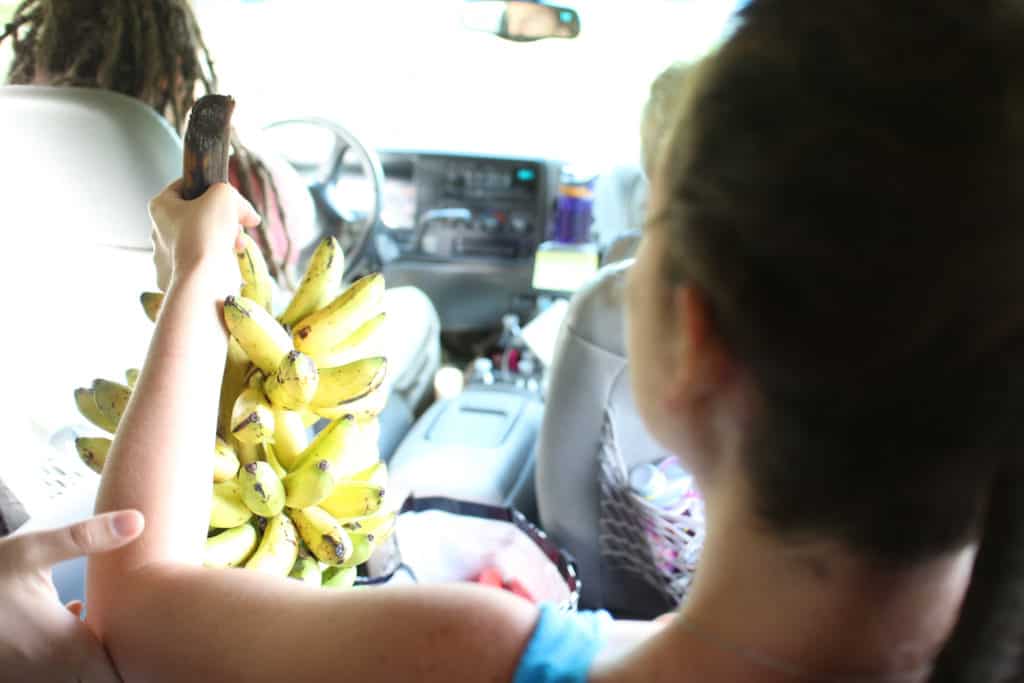
To get to Lachuá from Guatemala City, take the CA-9 highway towards Coban. Continue driving northon the highway towards Chisec for approximately 55 miles (with an optional stop in Chisec for freshly toasted cardamom).
Continue north until you reach the Franja Transversal del Norte. Turn left towards Playa Grande and continue driving approximately 38 miles on this road until you reach the Laguna Lachuá Visitor’s Center.
Parking lots where you can pay to leave your vehicle are located in front of the visitor’s center.
Once you pay your entrance fee, you will need to walk 2.61 miles to reach the recreational area at the lagoon. The trail is smooth, flat, and straight.
How to Get to Laguna Lachuá on Public Transportation
Transportes Monja Blanca is a recognized bus company offering Pullman-style transportation from Zone 1 of Guatemala City to Coban. Check out their website for information on where and when to catch a bus. It will take an average of five hours to get to Coban by bus.
Alternatively, you can take a tourist shuttle from most of the main tourist hubs in Guatemala. These can often be arranged through your hotel or hostel or booked at tourist agencies in these towns.
Once you reach the bus terminal in Coban, you can take another bus heading towards Playa Grande.
Important! Be sure to remind the driver that you want to get off at Laguna Lachuá. The visitor’s center is on its own (not in a village) so there is no standard stop here.
Once you pay your entrance fee, you will need to walk 2.61 miles to reach the recreational area at the lagoon. The trail is smooth, flat, and straight.
Is it safe to visit Laguna Lachuá?
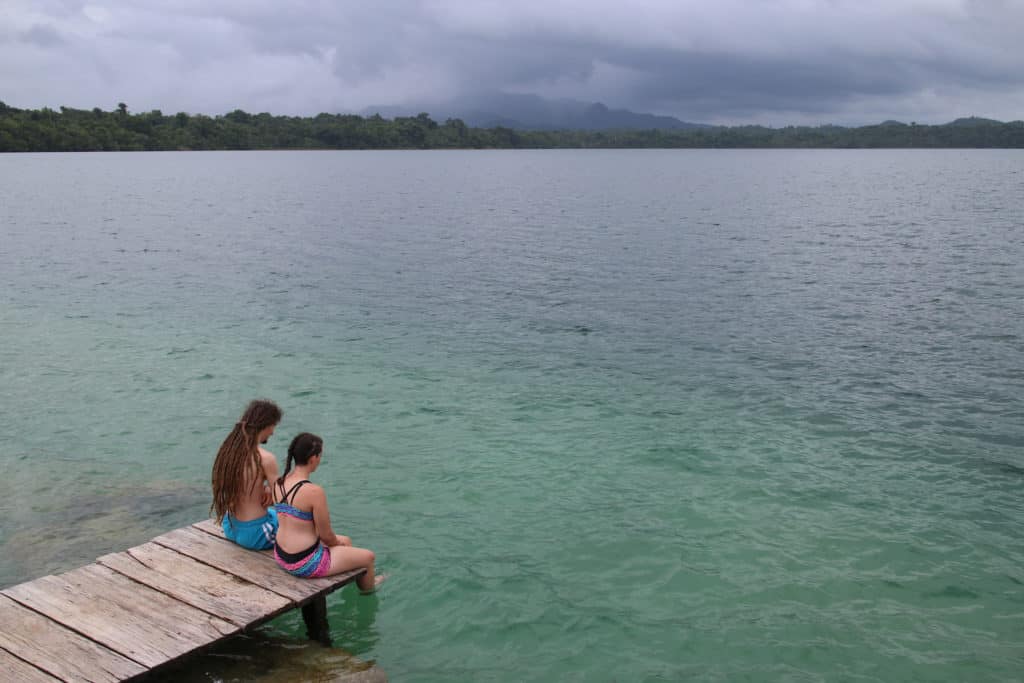
Laguna Lachuá is a well-regulated park with park rangers and caretakers on site. As long as you stay within the designated areas and on the paths (which are well-marked), you shouldn’t get lost.
The park is located in a hot and humid region, and there are no water sources in the park. The lake water is sulfuric and not suitable for drinking so be sure to take plenty of water to prevent dehydration.
Be aware that there is no cell phone reception in the park.
In the past few years, some of the surrounding communities have cut down trees and deforested large swaths of land in the park. This has caused some tension between park rangers and community members, but it is unlikely to affect visitors to the region.
What does “Lachuá” mean?
Laguna Lachuá gets its name from the Maya Kekchi words “li chu há” which means “fetid water.” It’s an appropriate name since the lake smells mildly sulfuric!
In fact, the water in Laguna Lachuá has high levels of salt, nitrites, and calcium. As you can probably guess, it is NOT good for drinking!
History of Laguna Lachuá National Park
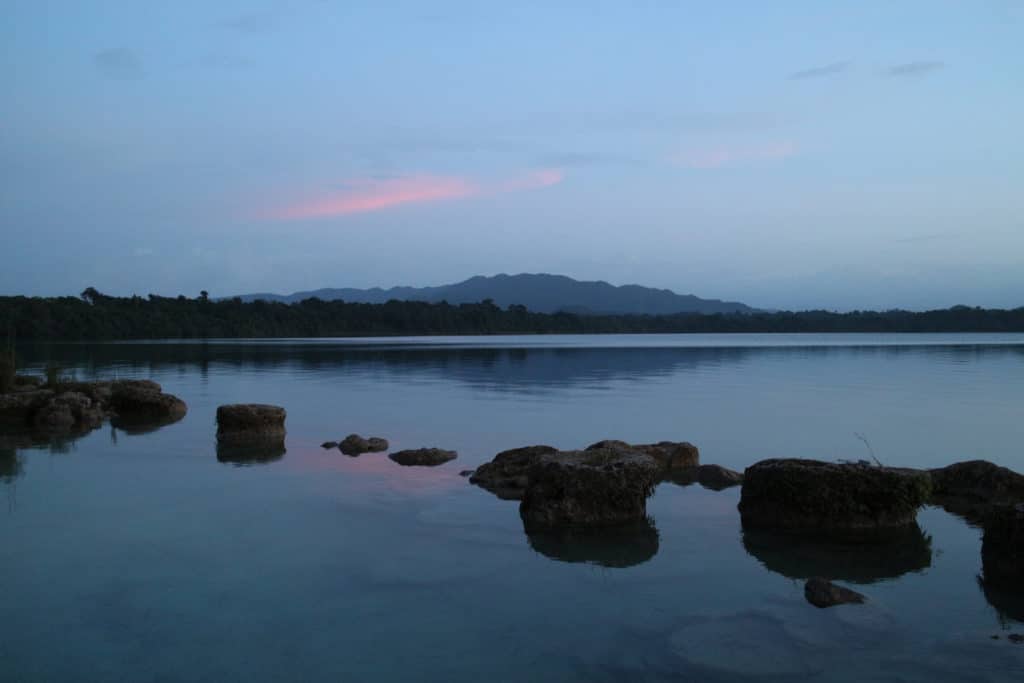
Laguna Lachuá National Park was formed in 1976 and consists of 90 square miles of humid wetlands and floodplains. It is included in the Ramsar Convention–an international agreement signed in Ramsar Iran in 1971.
This means that the wetlands and aquifers within Laguna Lachuá National Park must be used wisely. “Wise Use” can include: adopting wetland policies, implementing programs to monitor, research, and manage wetlands, and investing in training, education, and public awareness programs.
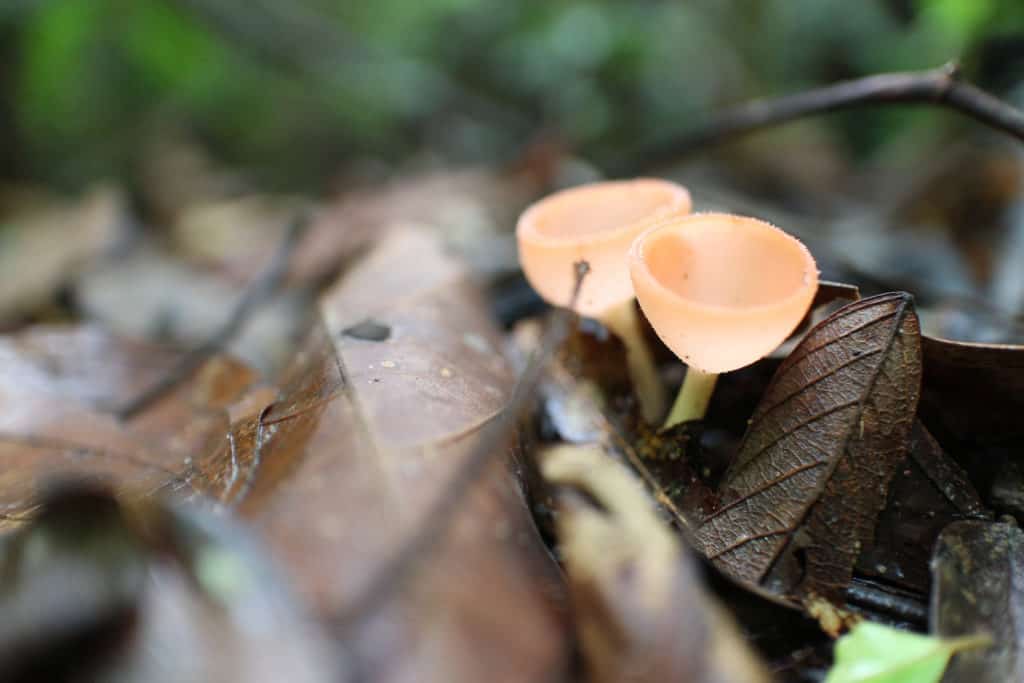
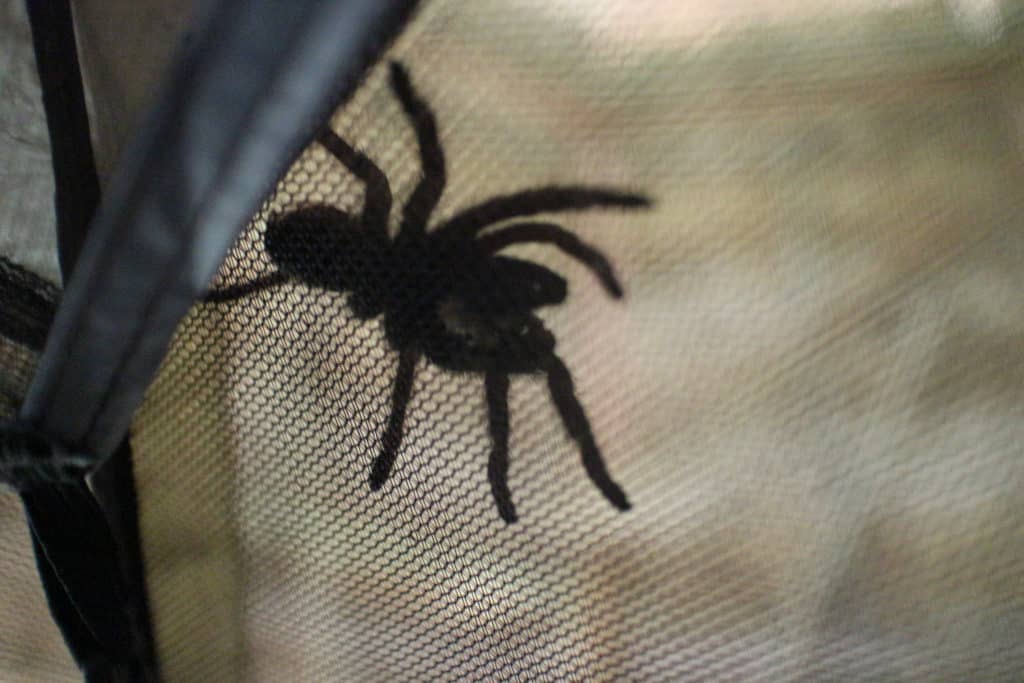
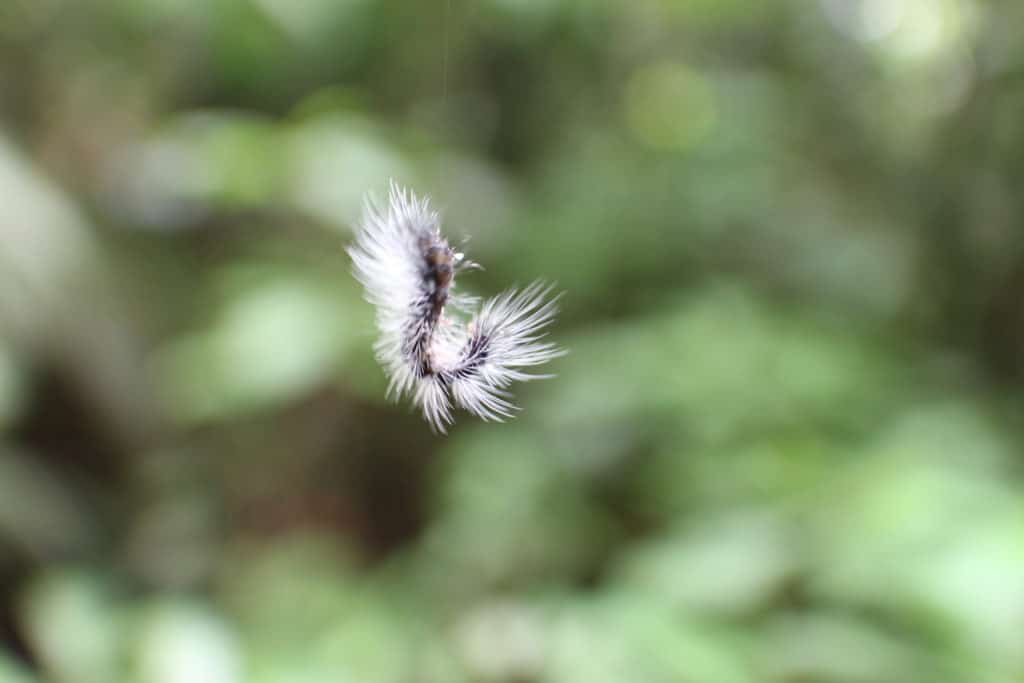
Unfortunately, communities around the park continue to cut down trees and have deforested large swaths of land. Hopefully in time, the local communities can understand the importance of conservation!
If you can read in Spanish and want more complete information on the park, including lists of bird and fish species, you can check out this Laguna Lachuá National Park pdf from CONAP, Guatemala’s National Council for Protected Areas.
The wrap-up
Although it is a bit off the beaten track, Laguna Lachuá is a tranquil and beautiful place to visit. I can’t think of a better way to spend the day than taking a hike through the jungle, swimming in a clear lake, and relaxing in the middle of 90 square miles of unspoiled nature. So what are you waiting for? Hop in your car or on a bus and enjoy your next Guatemalan adventure!
Want another off-the-beaten-track adventure? Head to the wilds of Huehuetango to visit Laguna Brava, the Cenotes de Candelaria, and the crazy deep Hoyo de Cimarrón (Guatemala’s very on tiankeng sinkhole).
Izabal also has some great lesser-visited destinations such as Las Cascades del Paraíso, Vivero Frutas del Mundo (exotic farm-to-table meal, anyone?) and the awe-inspiring community tourism project at El Boquerón.
While you’re in the area, you may as well stop in at the historic castle/fort/pirate magnet/ancient prison: Castillo de San Felipe de Lara.
Looking for something specific? Check out my destinations page to search by region.
***GUATEMALA TRAVEL PLANNING GUIDE***
Should I buy Guatemala travel insurance?
YES — Personally, I always travel with travel insurance because it gives me extra peace of mind. SafetyWing is an excellent travel insurance company that’s quite affordable. Plus, if you travel longterm, it’s a snap to renew on a month to month basis. You can keep renewing for up to a year and still pay the same deductible.
Where’s the best place for finding cheap flights to Guatemala?
When I purchase a ticket, I always search several different sites. Kayak and Expedia are great places to start running a search. Spirit is usually the cheapest carrier, but American Airlines and United also sometimes offer excellent deals.
What’s the best way to book my Guatemala accommodations?
I recommend booking.com for finding and booking hotels in Guatemala. For vacation rentals, I recommend VRBO.com — it offers beautiful and unique spots to stay.
What’s the best way to book Guatemala tours?
Viator is a great tour booking site with several excellent options available in Guatemala’s main tourist areas including Tikal, Atitlán, Antigua, and Acatenango. There’s a nice range of prices and options available.
Can you drink the water in Guatemala?
No – Don’t drink the tap water! Instead, buy purified water from any corner store or grocery store in Guatemala.
Be sure to brush your teeth with that water as well to avoid getting sick. And hydrated, especially when traveling to high elevations.
Do I need a visa for Guatemala?
Probably not — Visitors to Guatemala from “Category A” countries like the United States, Canada, the UK, New Zealand, Australia, and most European countries are automatically given a 90-day tourist visa (in the form of a passport stamp) when entering Guatemala.
This visa is valid for Guatemala, Nicaragua, Honduras, and El Salvador. At the end of 90 days, it can be renewed once at Guatemala’s Migración without leaving the country.
After 180 days, you will have to travel outside of Central America before returning. Check to see if you need a visa.
Will my phone work in Guatemala?
It’s possible, but check with your provider in advance to see if Guatemala is covered. If not, you can easily pick up a local SIM card.
There are essentially only two carriers in the country: TIGO and CLARO. Both have good coverage.
